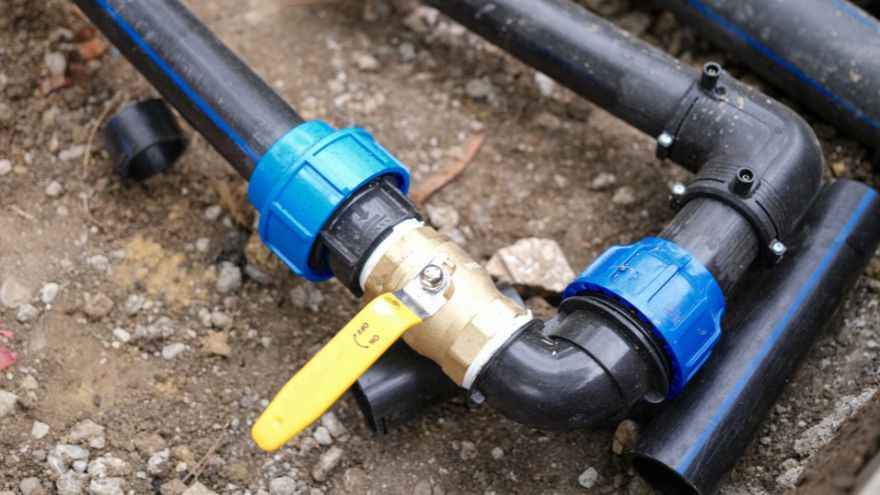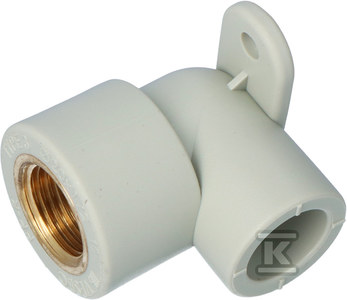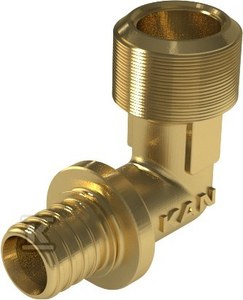An elbow (colloquially, an elbow ) is a type of pipe fitting that allows pipes to be connected at different angles in order to change the direction of medium flow in the installation. Elbows installed in modern installations are increasingly made of plastic. In this article, we focused on the installation of the PP elbow - made of plastic with unique properties.

Check installation elbows at the Onninen wholesaler
How to avoid damage when installing a PP elbow?
 T he PP elbow , i.e. made of polypropylene, is a frequently used element in modern central heating, cold and hot water installations, as well as in technological, refrigeration and sanitary installations. PP elbows can be used both in residential buildings and industrial facilities. Systems made of PP material are characterized by high durability, safety for the natural environment and the user, excellent chemical resistance and complete resistance to corrosion. They perform a thermal insulation function.
T he PP elbow , i.e. made of polypropylene, is a frequently used element in modern central heating, cold and hot water installations, as well as in technological, refrigeration and sanitary installations. PP elbows can be used both in residential buildings and industrial facilities. Systems made of PP material are characterized by high durability, safety for the natural environment and the user, excellent chemical resistance and complete resistance to corrosion. They perform a thermal insulation function.
 They retain heat well, limiting the cooling of water in the installation. The perfect smoothness of the internal walls prevents the accumulation of limescale. PP elbows are designed for trouble-free, easy and convenient installation. The pipe can be connected to the elbow, e.g. by screwing, clamping or gluing. Polypropylene is characterized by high melting properties, which is why most experts recommend connecting PP R pipes with a PP elbow by welding - as the most effective method, guaranteeing effective sealing.
They retain heat well, limiting the cooling of water in the installation. The perfect smoothness of the internal walls prevents the accumulation of limescale. PP elbows are designed for trouble-free, easy and convenient installation. The pipe can be connected to the elbow, e.g. by screwing, clamping or gluing. Polypropylene is characterized by high melting properties, which is why most experts recommend connecting PP R pipes with a PP elbow by welding - as the most effective method, guaranteeing effective sealing.
Welding pipes with fittings at high temperature (260-270°C) means that there is no visible boundary between the elements at the point of connection. The weld is uniform and tight. To avoid damage to the elbow during the connection, it is necessary to ensure an appropriate level of plasticity of the elements. For this purpose, the pipe ends and fittings are heated to the melting temperature of the material. The heated pipe (end) should be quickly placed in the elbow socket. After cooling the joint, the polypropylene system is ready for use.
What should you remember before welding elbows?
- Creating a durable and tight connection using welding in a short time requires a special device - a welding machine, portable or stationary, depending on the diameter of the elements. You also need heating electrodes and a pipe cutting tool, e.g. scissors, a circular cutter or a saw with a dedicated saw blade.
- The welding process requires knowledge and experience both in welding PP-R pipes and in using your welding machine (individual device models have different parameters). Have you bought a new welding machine? Be sure to perform test welds.
- Do not start welding immediately after the device has heated up to the desired temperature. It will take a few more minutes for the heat to be evenly distributed.
- The welding process should take place at a sufficiently high ambient temperature, otherwise it will be ineffective and much more time-consuming. When the temperature drops below 4°C, welding is discouraged.
-
 You should avoid creating very long sections of PP pipes because they tend to expand and elongate under the influence of heat. Excessive elongation of the pipe may cause it to tear out of the elbow. Fortunately, there are effective ways to solve this problem.
You should avoid creating very long sections of PP pipes because they tend to expand and elongate under the influence of heat. Excessive elongation of the pipe may cause it to tear out of the elbow. Fortunately, there are effective ways to solve this problem. - When the PP-R system is installed on a wall, the pipes must not be poured with mortar directly. Lagging should be used. This requirement applies to both cold and hot water pipes.
PP elbows at the Onninen wholesaler
In the Onninen hydraulic wholesaler you will find PP elbows in over 100 different versions, coming only from renowned manufacturers and suppliers, such as Kaczmarek , Wavin , KAN-Therm or Onnline . You can also order other fittings from us, e.g. flange sleeves. You don't know which pipe fitting to choose? Are you wondering whether the PP 20 elbow will fit your system? Take advantage of our team's help. Call or write!